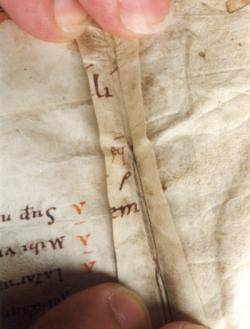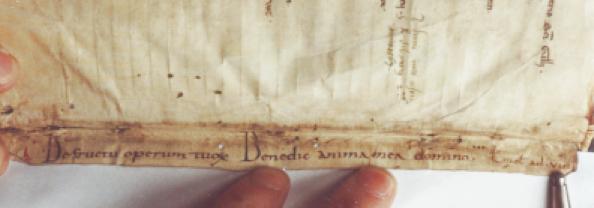
In the Hartker-antiphoner three fragments of a 9th century Introitus- and Communio-versicularium are used as binding material. This is a similar to ms St. Gallen 381, but probably dating from the late 9th century.
The outer (recto) side displays the incipit of the communio De fructu operum tuorum, with the verse Benedic anima mea domino (cf. SG 381, p. 131, bottom of page).

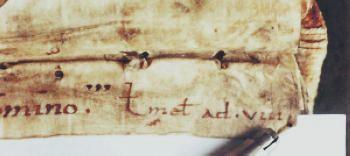
At the end of the verse is the remark vel melodia ad viii.
The inner (verso) side has one of the verses (Et manducaverunt) to the comm. Panem de caelo (cf. SG 381, p. 132).
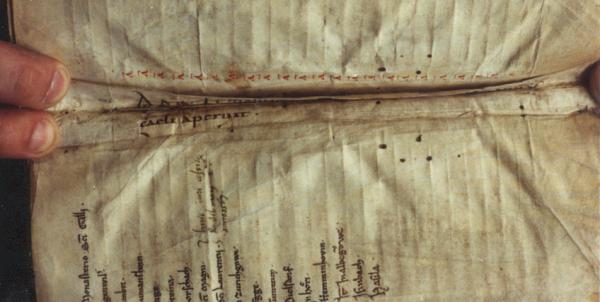
A bit more opened:

A second fragment is in the back of codex 390. The inner (recto) side shows the verses to the comm. Illumina (cf. SG 381, p. 70).

The outer side has the verses Attendite (not shown) and Panem angelorum to comm. Manducaverunt (cf SG 381, pp. 70-71).

Another strip, cut lengthwise, is bound upside down in the first gathering of codex 391.
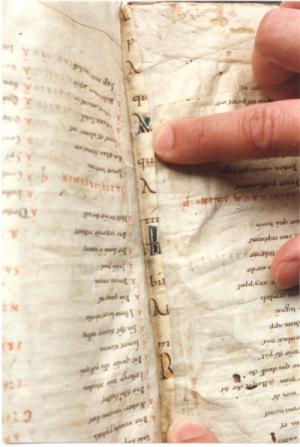
This strip shows the initials of the Versicularium, and the colors used: blue and yellow. The initials are of the intr. Memento nostri and Hodie scietis and comm. Revelabitur (cf. SG 381 p. 54-55).
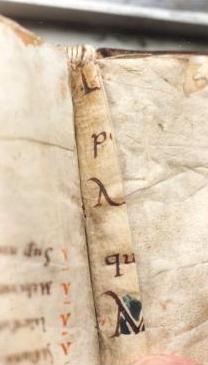
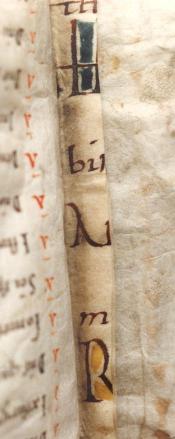
The inner side of this fragment has no initials:
